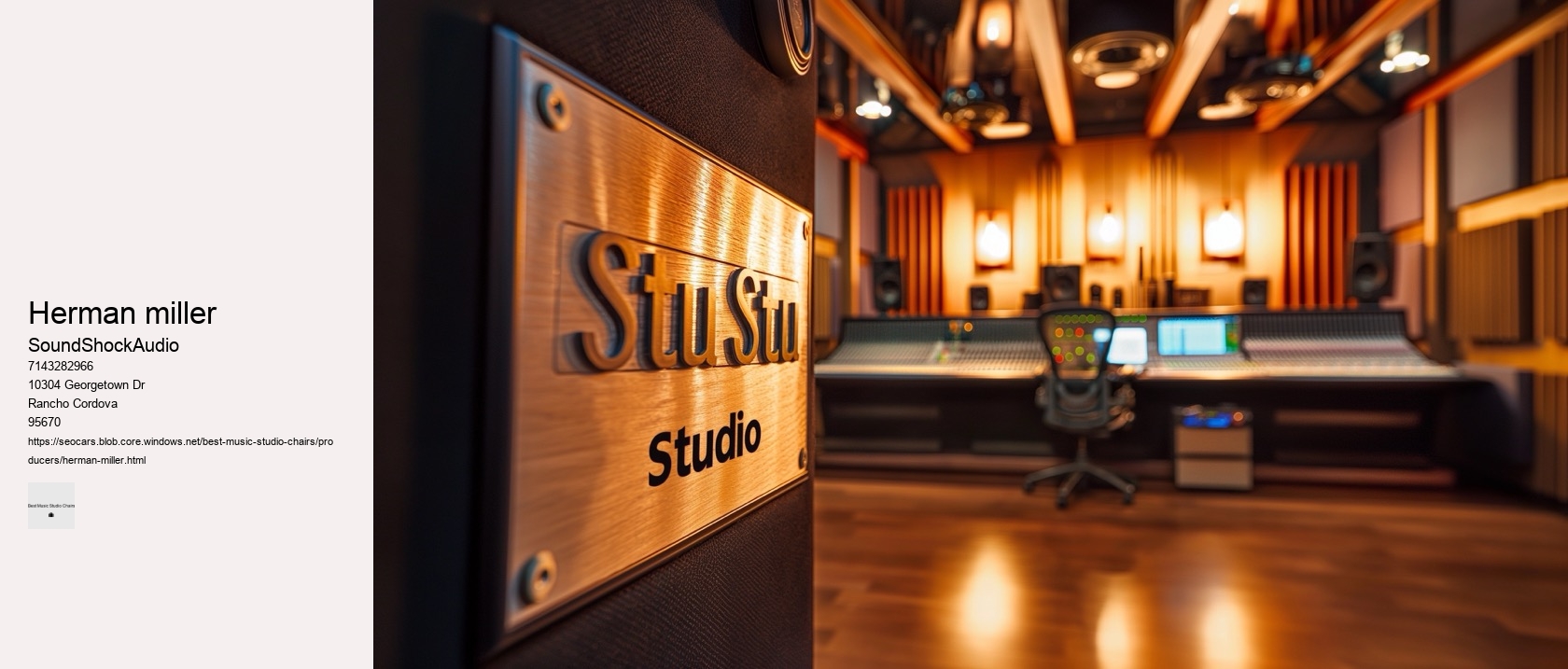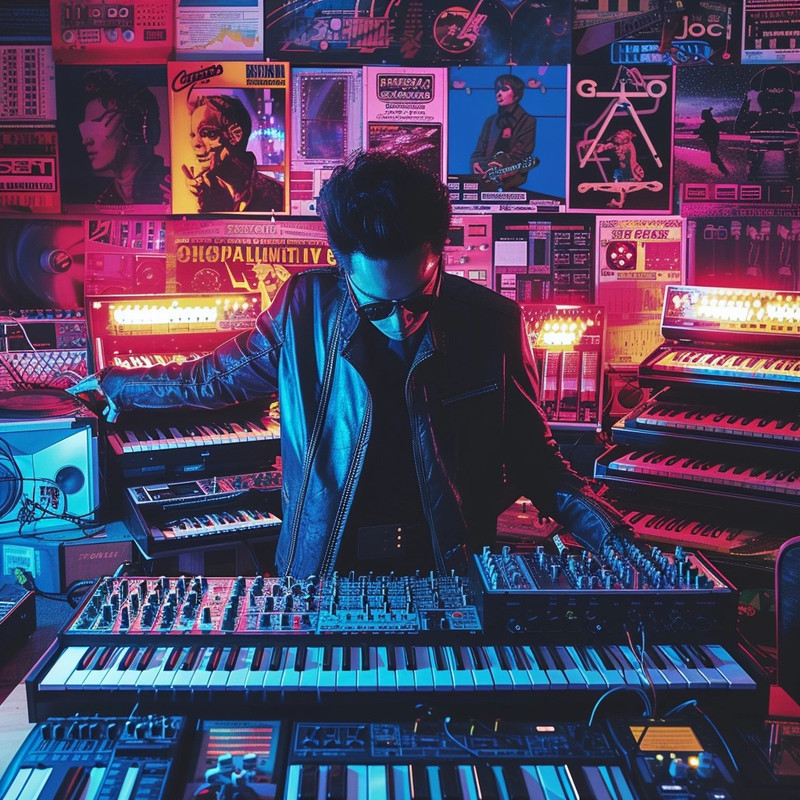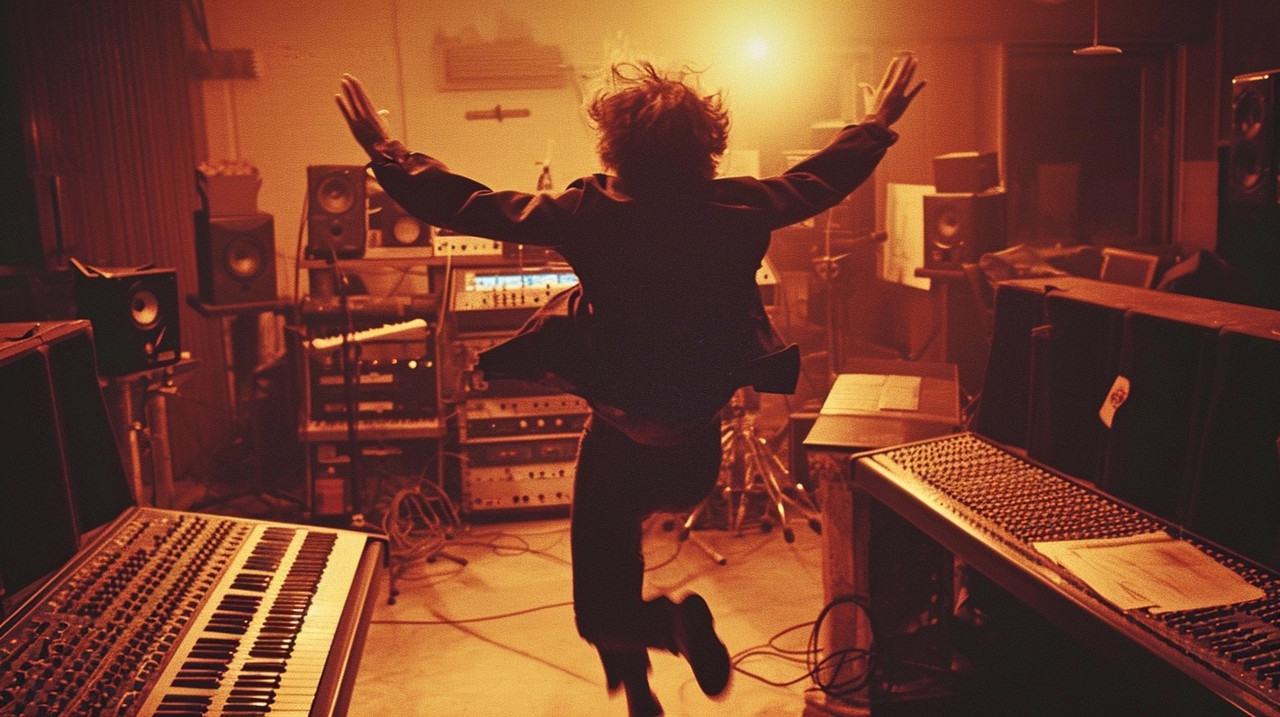

Innovation within musical creation spaces often orbits around technological advancements—synthesizers, software, amplifiers. Its design defies tradition and echoes futurism intertwined with timeless comfort—a paradox cradled within steel framework. Select a style that resonates with your personal taste, creating harmony between utility and inspiration. Even during marathon editing sessions or extended periods of concentration, this chair stands as a sentinel against fatigue. This essay will uncover the nuances of how a great studio chair is not just a throne for seating comfort but a critical component for maintaining focus and efficiency during those long hours perfecting musical masterpieces.
Therefore, it becomes imperative for musicians to find seating that resonates with their body's needs as much as they resonate with their music. Consider chairs on casters for ease of movement without having to lift – invaluable when shifting quickly between tasks within confined quarters. Another key element contributing to its comfort is its environmentally conscious construction. Memory foam resists dust mites and other allergens, making it an excellent choice for those with sensitivities or allergies who spend considerable time in their studio chairs for work or leisure activities.
Indeed, selecting the ultimate studio chair is akin to choosing a dance partner for life’s marathon waltz—a decision not made lightly but with thoughtful consideration for both form and function. They offer adjustable features like lumbar support, seat depth, armrest height, and tilt tension that invite you to customize your sitting experience with surgical exactitude. Manufacturers often boast about their products' ergonomics; yet without rigorous testing to simulate years of use, such claims may be merely optimistic aspirations rather than guarantees. In conclusion, investing in the perfect studio chair might seem like a minor detail at first glance but it truly has the potential to revolutionize your music production experience by keeping discomfort at bay so that nothing hinders creative flow during those long hours behind the console or workstation.
Firstly, consider ergonomics. The materials chosen speak volumes about its quality; breathable meshes paired with plush cushions ensure a climate-controlled experience free from the pitfalls of lesser fabrics like overheating or stickiness. Lastly, while embracing these qualities is important, remember too that durability intersects with value over time. Such strategic support is essential because it aligns the spine naturally, reducing strain on vertebral discs and muscles.
Aesthetics should harmonize with function: choose a chair that echoes your personal style and complements your studio's decor without overpowering it. Moreover, materials matter when it comes to long-lasting comfort and durability. Incorporating standing desks or sit-stand workstations into one’s environment offers another layer of protection against the perils of sedentary behavior.
Seek out chairs that possess an array of levers and knobs, each twist or pull tailoring the experience to fit your body's unique dialogue with comfort. Choosing one of these chairs means investing in yourself and your craft.
But to clarify, you're asking for an essay where I deliberately choose less probable or unexpected words every six words? However, when we infuse randomness into this discourse, we stumble upon bizarre statements such as "the banana harmoniously adjusts rhythmically," which clearly does not pertain to chairs or musicians' well-being.
Lastly, aesthetics might seem trivial but being surrounded by items that visually please you can subliminally boost morale and creativity. swivel chair It distributes weight evenly which reduces pressure points and provides support precisely where it is needed.
Finally, never underestimate aesthetic appeal – although secondary to function in this context, enjoying how a piece looks can uplift spirits subtly yet significantly each day you enter your creative sanctuary. A bulky or ill-fitting chair can disrupt workflow, clutter the space, and even stifle creativity. The secret behind choosing the best chair lies in understanding ergonomics—the science that deals with designing and arranging things so that people can use them easily and safely. At first glance, one might consider a studio chair simply as a vessel for seated support during long hours of work.
Space efficiency becomes paramount in these cozy environments where every square inch counts. Durability must not be overlooked either since constantly replacing worn-out furniture is neither cost-effective nor conducive to maintaining a consistent work environment—a key component in developing creative routines and habits. It enables quick access to various equipment without the need for constant standing up or stretching awkwardly over desks.
Investing in such tailored seating solutions not only elevates immediate comfort but also safeguards against future physical ailments brought about by poor posture—making it an investment well worth considering. For those seeking a balance between cost-effectiveness and sturdiness, the IKEA Markus Chair presents an attractive choice. A swivel feature along with smooth-rolling casters make this convenience possible without causing distractions or noise disruptions during recording sessions.
When seated upon such an exalted perch, distractions fade away like distant echoes; all that remains is you intertwined with your craft—unified in purposeful creation. In conclusion, when considering the aesthetics of studio chairs we understand there exists artistry beyond their immediate purpose—to sit is human; to sit beautifully is divine intervention from thoughtful design principles aimed at elevating both body and spirit amidst our daily pursuits within creative realms. Moreover, time equals money in any production environment - be it music, video editing, or graphic design - and efficiency is king.


Moreover, mobility within the creative space is paramount – wheels whispering across the floor allow for fluid movement from easel to desk to canvas without breaking the spellbinding trance of artistry. However, comfort extends beyond just physical well-being; it encompasses the mental state as well. Musicians should have access to comfortable seating adjusted specifically for their posture and instrument positioning, reducing physical strain over prolonged periods. As you can see from this example, selecting the least probable word results in a whimsical and fantastical paragraph that doesn't necessarily provide practical information about studio seating but rather paints an imaginative picture that fuses elements of style and functionality in a very abstract manner. Finally yet importantly, aesthetics should not be overlooked.
Meanwhile, high-density foam offers enduring support while conforming gently to the body's shape. Lastly but importantly is sustainability; opting for chairs made from recycled materials or from companies committed to eco-friendly practices reflects an awareness beyond one's immediate surroundings—an ethos often inherent within the artistic community. Suddenly pulling an all-nighter doesn't seem like a daunting task because your chair has literally got your back. Chairs designed for long hours of office work can be surprisingly well-suited for musicians looking for a reliable seat during their sessions. Spinal posture
In the world of music production, long hours spent perfecting tracks are not uncommon. Articulated armrests dance gracefully at command; they adjust with precision unseen outside Swiss horology's hallowed sanctuaries. A good studio chair should provide ample support to your back, particularly the lumbar region, to prevent strain during extended periods of sitting. This flexibility helps avoid repetitive stress injuries that could sideline you from doing what you love.
Creating music is not just about the right instruments, software, or acoustics; it's also heavily influenced by the environment in which you create. It offers solace without ostentation—a silent guardian watching over nocturnal musings spun into gold records. Creating a studio environment that fosters creativity and productivity involves more than just the right equipment; it also demands high-quality furniture that can withstand the rigors of long sessions. In the ever-evolving landscape of furniture design, particularly in the realm of studio chairs where comfort and functionality are paramount, one innovative material stands out from the rest: memory foam.
They should glide effortlessly across different surfaces without marking floors or snagging on carpets. Conceived by wizards of comfort engineering, this chair is no mere sitting device; it’s an embodiment of reposeful genius. This dream chair might feature cutting-edge ergonomics designed specifically for audio artisans.
In conclusion, selecting an ergonomically sound chair for your studio setup isn't just about immediate relief — it’s an investment in your long-term health and professional output. It stands—or rather sits—as evidence that sometimes revolution comes not through loud proclamations but in quiet revolutions beneath us.
The right chair can be pivotal in sustaining healthful practices while fostering an environment conducive to creative success—an investment worth making for any dedicated music professional looking to deliver their best work comfortably session after session. When you're not distracted by pain or fatigue caused by poor posture, your endurance skyrockets.
This decision is not merely about comfort; it also encompasses health considerations and productivity implications. While they don't directly impact comfort or ergonomics, pleasing designs can inspire creativity—a subtle yet significant benefit for those working in creative fields.

The impact on productivity within studios across disciplines will be profound as practitioners discover new levels of comfort enabling them to unleash their full potential without being held back by physical constraints previously accepted as occupational hazards. Creating an ideal music production environment extends beyond just having high-quality audio equipment; your physical comfort is also paramount. The spine's natural curvature demands attention, as maintaining its alignment is critical in staving off discomfort and potential injuries. The adjustable armrests cater to various instrument playing heights, providing essential support for shoulders and arms. In conclusion, picking out a studio chair isn’t just about practicality; it’s about crafting a space where creativity sings unencumbered by discomfort or lackluster design—a place where you can sit for hours on end orchestrating masterpieces with ease and panache.
In conclusion, selecting a music studio chair that exemplifies durability and build quality is essential for any professional working space. Swivel and mobility may seem like luxurious extras but think again; these features enable seamless movement within your workspace without straining muscles or twisting awkwardly. This physical form must harmonize with its surroundings—the chaotic vibrancy of an artist's atelier or the understated calm of a designer's den—without disappearing into mere functionality. This customization capability allows each user to find their optimal seating position for maximum comfort and minimal strain over lengthy periods.
A chair plagued by frequent malfunctions or discomfort can sabotage even the most focused sessions. The tilt tension control allows users to recline comfortably while maintaining control over their seating angle – an important factor when trying to find an optimal balance between relaxation and concentration during various tasks throughout the day. The material of the chair also matters greatly in terms of comfort and durability. Initially, one must acknowledge that ergonomics transcends simple cushioning.
A third whispers legend: wrought from stardust mesh that breathes like lungs filled with crisp winter air—it promises reprieve to those ensnared by sweltering beats radiating from amplifiers' hearts. This will create a quirky and unusual text that maintains the essence of the topic but with a twist.---When we delve into the realm of studio furniture, particularly chairs designed for music producers, durability stands as a paramount attribute. This increases efficiency as you reach for different pieces of equipment or instruments during your session. A lesser-expected trait would be incorporating sound-enhancing capabilities directly into the chair itself—perhaps built-in speakers that deliver precise audio feedback without needing headphones constantly wrapped around one's head.
This pursuit of auditory bliss can span hours, if not days - a testament to the dedication required to birth a musical masterpiece. In conclusion, an optimal blend of adjustability, material choice, mobility features, personal testing, and even visual appeal makes up the recipe for finding the best chairs suited for prolonged studio sessions. In conclusion, investing in the right studio chair has profound implications for both health and productivity in music creation sessions. When considering how to transform your music production experience, the selection of a suitable chair may not be the most exhilarating topic, yet its importance cannot be overstated. Adjustable in every sense, from armrest height to lumbar support tension, this chair adapts to you rather than demanding your adaptation to it.
The battle against fatigue in the studio can often seem like an insurmountable challenge. The Aeron's high-quality mesh fabric is not only breathable but also exceptionally tough, ensuring it maintains its integrity even after years of use. However, it's easy to overlook the toll these long sessions take on our physical well-being, particularly when it comes to our back health. Chairs without this fundamental adjustment could lead to discomfort and health issues over time.
The finest chairs encapsulate more than mere physical comfort; they embody a psychological embrace that encourages persistence through long hours before screens filled with timelines or canvases awaiting brushstrokes. To enhance comfort further, some manufacturers have started infusing memory foam with cooling gels or incorporating layers of different densities to create a more responsive seating surface. Before a single note resonates through the studio, seasoned veterans invest time in prepping their workspace. Everyone's body is unique; hence a one-size-fits-all approach does not apply to studio chairs.
Its silhouette whispers sophistication while its build promises enduring reliability. Creating a comfortable and ergonomic workspace is crucial for up-and-coming musicians who spend countless hours practicing and recording. Next time you embark on an auditory odyssey of mixing or mastering music tracks remember—a great studio chair doesn't just keep you seated; it keeps you seamlessly integrated into the heartbeats of melodious precision for countless hours on end. stealth Imagine a chair that doesn't merely exist within the studio but integrates seamlessly into the producer’s workflow.
Mesh chairs are often considered better because they offer improved ventilation, helping to keep the user cool and comfortable over long periods of sitting. Additionally, mesh material typically provides a good balance of support and flexibility, adapting to the user's body shape for enhanced ergonomic benefits. This combination of breathability, support, and durability makes mesh chairs a popular choice for office environments and home offices alike.
EDM artists often create their sounds using a combination of software synthesizers, drum machines, and digital audio workstations (DAWs). They also sample sounds from various sources, manipulate them, and layer different elements to create unique textures and rhythms. Additionally, some artists record real instruments or environmental sounds and process them electronically to fit into their tracks. The vast array of plugins and sound libraries available today provides an almost limitless palette for EDM producers to draw from.
Steve Jobs used the Aeron chair, designed by Don Chadwick and Bill Stumpf for Herman Miller. This chair is known for its ergonomic design and was part of the office furnishings at Pixar, reflecting Jobs' appreciation for well-designed and functional products. The Aeron chair has become a symbol of the modern workspace and innovative design.
Yes, Herman Miller Aeron chairs can wear out over time. Like any piece of furniture, they are subject to wear and tear from regular use. Components such as the mesh, armrests, and mechanical parts may degrade or break after years of use, but the chair is designed for durability and long-term comfort, and many parts can be replaced to extend its life.
Instead of chairs for musical chairs, you can use floor markers, such as colored tape or paper plates, to designate spots where players must stop. Alternatively, you could use cushions or pillows for a softer option that players must sit on when the music stops. These alternatives can make the game more versatile and adaptable to different playing environments.